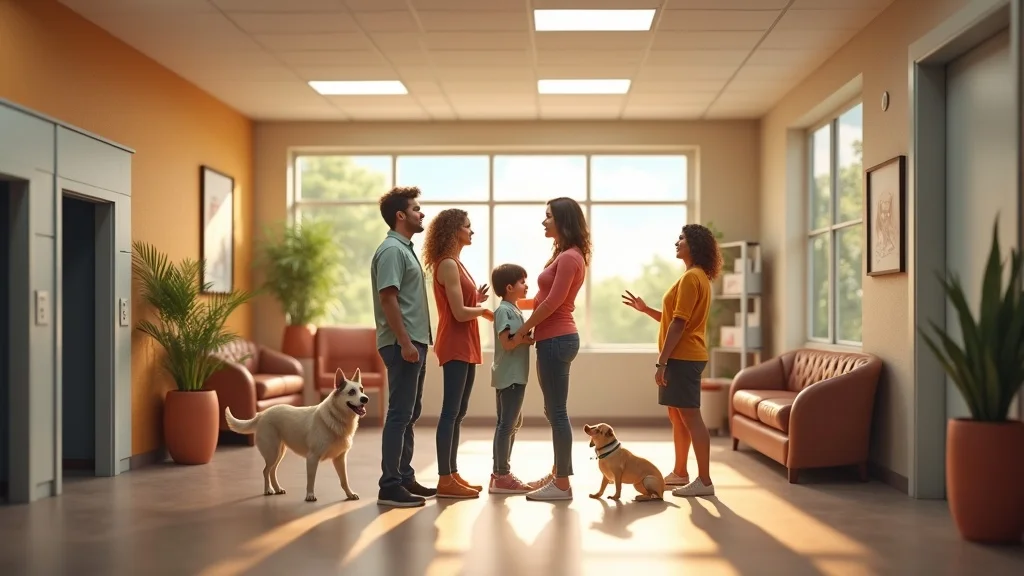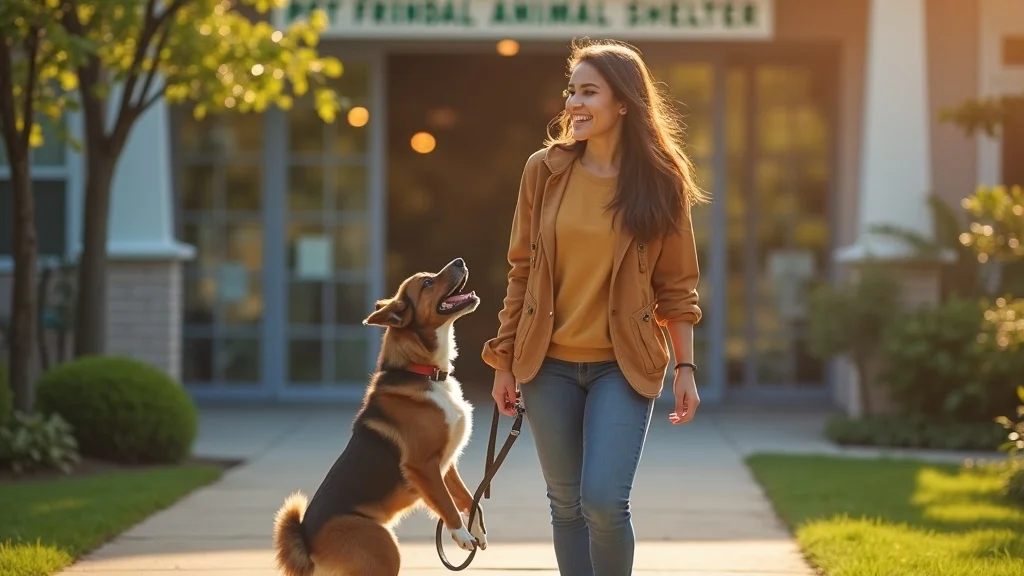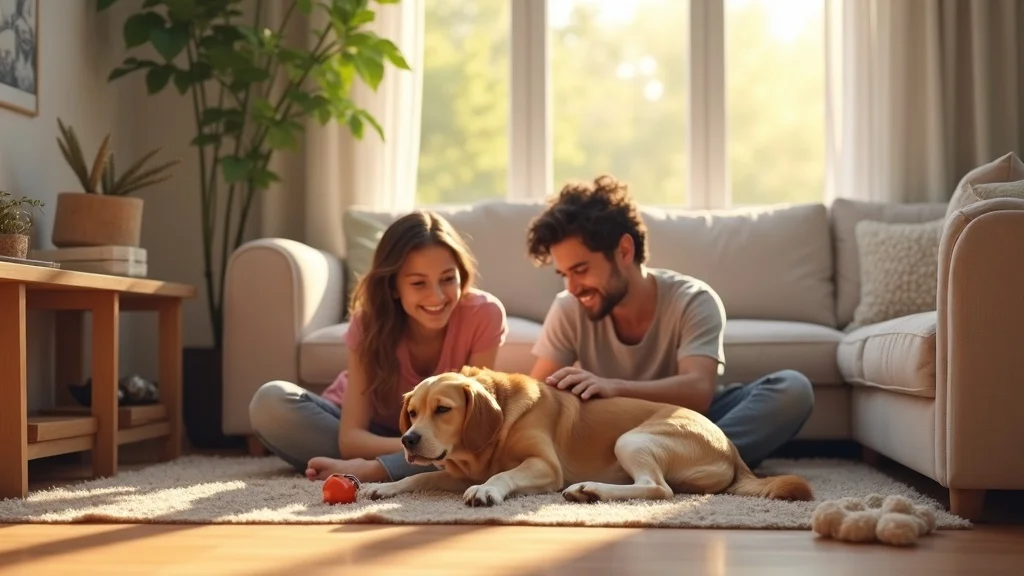Did you know that every year, approximately 3.3 million dogs enter animal shelters in the United States alone? That’s millions of eager, loving hearts awaiting their second chance with families just like yours. If you’ve ever wondered, “How do I adopt a dog?,” you’re about to uncover every step and secret for a pawsitive adoption experience.
“Approximately 3.3 million dogs enter U.S. animal shelters every year, eagerly awaiting a second chance.” — American Humane Society

Starting Your 'How Do I Adopt a Dog' Journey: Surprising Facts and First Steps
Diving into the world of dog adoption is more than just finding a furry friend—it’s a journey that saves lives and brings immense joy. Before you visit your local animal shelter or reach out to a rescue group, it helps to know some key facts. First, millions of adoptable animals—especially dogs and cats—are seeking their forever homes across the nation, with many awaiting at a nearby humane society, rescue group, or adoption center. Each shelter or rescue may offer different resources and have varying adoption processes, but all share the goal of making a good match between a potential adopter and an adoptable pet.
One of the most important first steps is to assess your readiness and research the best locations to view available pets. By doing this, you’ll learn what’s required, from adoption fees to bringing a puppy home, and how to make sure your new family member is a good fit. Whether you’re keen on adopting a puppy or giving a loving home to an older dog, knowing these facts helps you prepare and ensures a smooth transition for all. Ready to meet your new best friend? Let’s explore what you’ll discover in this guide!
What You'll Learn About How Do I Adopt a Dog
- How to find adoptable animals at an animal shelter or rescue group
- Understanding adoption fees and the 3-3-3 rule
- Key steps and resources to adopt a pet responsibly
- What to expect when adopting a puppy versus an adult dog
How Do I Adopt a Dog: Understanding the Pet Adoption Process
Before you can welcome your new furry friend home, you’ll need to navigate the pet adoption process. It’s designed to ensure that every dog or puppy finds a loving home that matches their personality, needs, and energy level. The process starts with identifying local animal shelters, rescue groups, or even your nearest humane society. Each type of organization plays a vital role in caring for adoptable animals and helping potential adopters find a good fit for their lifestyle.
At most animal shelters and rescue groups, you’ll discover a variety of dogs—different breeds, sizes, and ages—all seeking a second chance. Many adoption centers strive to prepare each pet for transition to a new family, looking at health and behavior as well as the adopter’s ability to provide a caring environment. This means you’ll complete an adoption application, undergo interviews or home visits, and possibly even participate in an adoption survey to ensure you’re truly ready. Although the process may feel daunting, each step is a bridge to a lifetime of companionship with your new dog.
The Role of Animal Shelters and Rescue Groups
- What is an animal shelter? Animal shelters provide temporary housing and care for dogs, cats, and other pets until they find permanent families. They perform health assessments, vaccinations, and behavioral evaluations to ensure adoptable animals are ready for a home.
- How rescue groups support adoptable animals: Rescue groups, often volunteer-run, focus on saving pets from high-risk situations and placing them in foster homes while they await adoption. They give extra care to special-needs pets or those unable to thrive in a shelter environment, ensuring every dog or puppy has the best shot at a loving home.
- The difference between adopting from a humane society, animal shelter, and rescue group: While all three serve similar goals, humane societies typically concentrate on advocacy and community education, animal shelters handle direct intakes and adoptions, and rescue groups may be breed-specific or focus on urgent rescue scenarios. Each offers different resources and adoption processes, but all aim to find good matches for both pets and families.
“When you adopt a pet from an animal shelter, you’re giving a home to one of the millions of adoptable animals waiting for a family.” — Pet Adoption Counselor

How Do I Adopt a Dog in Five Essential Steps
Adopting a dog is a life-changing decision—and the process has never been easier or more accessible, especially when you know exactly what to do. If you’ve asked yourself “How do I adopt a dog?,” these five essential steps will take you from daydreaming to dog-parenting in no time. Here’s a simple, effective roadmap you can trust:
- Research animal shelters & rescue groups near you: Use online directories to view adoptable animals, check reviews, and find shelters or rescues with positive reputations for animal care and adoption support.
- Visit shelters and meet adoptable animals: Take your time interacting with potential adoptees. Ask questions about health, temperament, and any special needs so you can ensure a good match.
- Complete an adoption application: Most animal shelters and rescue groups require applications to gather information about your lifestyle, home environment, and experience with pets. Some may perform interviews or ask for references.
- Home visit and interview (if required): Certain organizations require a home check to verify that conditions are safe for a new furry friend—especially important for puppies or breed-specific adoptions.
- Pay the adoption fee & bring your new pet home: After approval, you’ll finalize the paperwork, pay your adoption fee, and receive helpful transition tips from staff before heading home to start your new life together.
Each step is designed to ensure you and your future pet are truly a good fit, supporting a stress-free transition and lifelong bond. Remember: a little patience up front leads to maximum tail wags later!

What Is the 3-3-3 Rule When Adopting a Dog?
Every potential adopter wants to make sure their new dog or puppy settles in comfortably. The 3-3-3 rule is a widely recommended guideline among animal shelters and rescue groups—it outlines what you and your new pup can typically expect in the first days, weeks, and months at home. This rule helps both humans and dogs ease the transition, reducing stress and paving the way for a successful long-term relationship.
By understanding this adjustment process, you’ll be better prepared to support your new pet, ensuring they feel safe and loved from the very start. Whether you’re adopting from a humane society, rescue group, or animal shelter, following the 3-3-3 timeline can make all the difference in creating a positive, lasting bond.
The 3-3-3 Transition Timeline for Adopt a Pet Success
3 days: In the first three days, your new dog is just starting to process their new environment. Expect them to feel overwhelmed, shy, or curious. They may eat less, sleep more, or seek hidden spots as they learn the layout and smells of their new home.
3 weeks: By week three, you’ll notice changes in your dog’s personality as they start to relax and settle in. Daily routines, gentle socialization, and positive reinforcement can help your new furry friend learn house rules and basic boundaries. This stage is crucial for building trust and helping your dog adapt.
3 months: After three months, most adopted pets begin to feel fully secure. They’ll bond with family members, start playing comfortably, and look forward to daily activities. Behavioral quirks may surface now, so it’s important to continue training and offer patience—as your dog learns that your home is truly a loving, forever home.

How Do I Adopt a Dog: Choosing Between Adopting a Puppy or an Adult Dog
One of the biggest considerations for any potential adopter is whether to adopt a puppy or an adult dog. Adopting a puppy brings excitement and energy, but also requires extra patience and training—including housebreaking, socialization, and time-consuming puppy-proofing at home. Puppies can be a good fit for active families or first-time pet parents ready for the challenge and joy of raising a young dog from scratch.
On the other paw, choosing an adult dog might be a “paw-some” option for those seeking a more mellow or predictable companion. Adult dogs often arrive with some training and may settle into routines more quickly. Many rescue groups and animal shelters can help you identify a good match for your household—taking into consideration lifestyle, work schedules, and even activity level. Both options offer unique joys and challenges, so be honest with yourself about what’s best for your family.
- Benefits and challenges of adopting a puppy: Endless playfulness and the chance to shape their personality, but requires significant time, patience, and training.
- Why an adult dog might fit your lifestyle: More predictable temperament and needs, often house-trained, and perfect for busy adopters or homes with established routines.
- Tips for families and first-time adopters: Think about your lifestyle, activity level, and willingness to train. Discuss expectations with all family members before making your final decision.

What Is the Easiest Way to Adopt a Dog?
If you want a simple, stress-free adoption journey, take advantage of online resources and local animal shelters working together to streamline the process. Many platforms now let you view adoptable animals in real time, filter by age, breed, or temperament, and even schedule visits—all from your smartphone or computer! These user-friendly tools save time and help you connect with the perfect adopt a pet match quickly, ensuring a good fit for all involved.
Visiting local shelters in person remains a classic, rewarding approach—giving you the chance to meet potential new friends face-to-face and discuss their personalities with knowledgeable staff. Combining both online and offline strategies is often the freshest and easiest way to find your new canine companion.
Online Tools and Visiting Animal Shelters
Most animal shelters and adoption centers now feature searchable photo galleries, virtual meet-and-greets, and detailed pet bios to help you get to know each potential friend before your visit. By leveraging these digital platforms, you’ll save time and focus your search for a good match.
After narrowing your options digitally, schedule in-person visits to see how you—and your family or other pets—connect with your chosen dog or puppy. Staff members at shelters and rescue groups can help answer questions about health, behavior, and the unique needs of each adoptable animal, ensuring you complete the adoption process with confidence and joy.
Walkthrough of online pet adoption platform — See how easy it is to search, filter, and schedule visits for adopt a dog success!
How Do I Adopt a Dog: Average Adoption Fees Explained
Adoption fees vary based on where you adopt your new best friend, but they typically cover essential services like vaccines, microchipping, and spay/neuter surgery. These fees not only ensure your pet is healthy but also support shelters and rescue groups in their lifesaving work. Understanding the differences can help you budget for the perfect pet and support the mission of your chosen organization—whether it’s an animal shelter, rescue group, or your local humane society.
| Shelter Type | USD Typical Fee (Range) |
|---|---|
| Humane Society | $50 - $350 |
| Rescue Group | $150 - $500 |
| Private Breed Rescue | $250 - $600 |
Before bringing your puppy or adult dog home, be sure to ask your shelter or rescue about what’s included in the adoption fee and if there are any ongoing costs. This ensures full transparency and prepares you to provide the best care for your new family member.
How Much Does It Cost to Adopt a Dog in Ohio?
Adoption costs vary by state, city, and even by organization. In Ohio, for example, adopting from an animal shelter or rescue group might have different fee structures compared to a private breed rescue or a humane society. On average, you’ll find adoption fees in Ohio range from $50 to $350 for shelters and $150 to $600 for rescue groups.
Additional expenses may occur—for example, if the animal shelter provides special medical care, or if you choose to purchase extra services like training classes or wellness packages. Always check with each facility for a clear breakdown of adoption fees and included services to ensure you’re prepared every step of the way.
Regional Adoption Fee Breakdown
Many Ohio shelters offer reduced or sponsored fees for older dogs, bonded pairs, or during special adoption events. It’s worth checking your county’s humane society or rescue group websites for promotional offers—these events help more dogs and cats find loving homes faster. Remember, while initial fees might feel like a hurdle, they are an investment in a healthy, happy pet and contribute directly to lifesaving work across Ohio.
Budget for essential supplies like food, bedding, toys, a leash, and veterinary care, in addition to your adoption fee. Planning ahead guarantees your new adopted pet’s homecoming is joyful and stress-free!
How Do I Adopt a Dog: FAQs for New Pet Parents
-
What paperwork do I need to adopt a pet?
You’ll generally complete an adoption application, show photo ID, and provide proof of residence and landlord approval (if renting). Some organizations ask for vet references or an adoption survey to make sure you and your new pet are a good match. -
Are there waiting periods or required home visits?
Some animal shelters and rescue groups have a 24–72 hour waiting period to finalize your adoption, while others may conduct a home visit, especially for puppies or certain breeds, to ensure a safe environment. -
Can I adopt a dog from out of state?
Yes! Many rescue groups and shelters allow out-of-state adoptions. You may need to meet additional requirements or organize transportation, but it’s a life-saving choice for adoptable animals in high-need areas. -
What does the adoption process involve at most animal shelters?
The typical process includes: viewing adoptable animals, completing an application, possibly attending an interview or home check, paying the adoption fee, and reviewing health records before taking your new pet home.
How Do I Adopt a Dog: Key Takeaways for a Pawsitive Experience
- Adopting a dog saves lives and brings joy to your family
- Research the best animal shelter or rescue group for your needs
- Understand the timeline and adjustments a dog needs with the 3-3-3 rule
- Adoption fees support the care & well-being of adoptable animals
- Be prepared for a lifelong commitment and loving companionship

Ready to Adopt a Dog? Subscribe for More Guidance!
Love pets as much as we do? Join our monthly newsletter for tail-wagging tips, adorable stories, and smart pet care hacks. 🐾 Subscribe now — it's paws-itively free!
Embarking on the journey to adopt a dog is both rewarding and life-changing. To ensure a smooth process, consider the following steps:
-
Research Local Shelters and Rescue Groups: Begin by identifying nearby animal shelters and rescue organizations. Many shelters, such as the Cuyahoga County Animal Shelter, provide detailed information about their adoption processes and available dogs.
-
Visit Shelters and Meet Potential Dogs: Spend time interacting with adoptable dogs to find one that aligns with your lifestyle and preferences. For instance, the Cheyenne Animal Shelter encourages potential adopters to meet pets in person to ensure a good match.
-
Complete the Adoption Application: Most shelters require an adoption application to assess your suitability as a pet owner. This may include questions about your living situation, experience with pets, and how you plan to care for the dog.
-
Prepare for Home Visits or Interviews: Some organizations, like San Francisco Animal Care and Control, may conduct home visits or interviews to ensure your home environment is safe and suitable for a new pet.
-
Understand Adoption Fees and Inclusions: Adoption fees vary by organization and often cover services such as spaying/neutering, vaccinations, and microchipping. For example, PAWS Chicago provides a breakdown of their adoption fees and what they include.
By following these steps and utilizing resources from reputable organizations, you can navigate the adoption process confidently and find a canine companion that fits well with your family.
 Add Row
Add Row  Add
Add 




Write A Comment